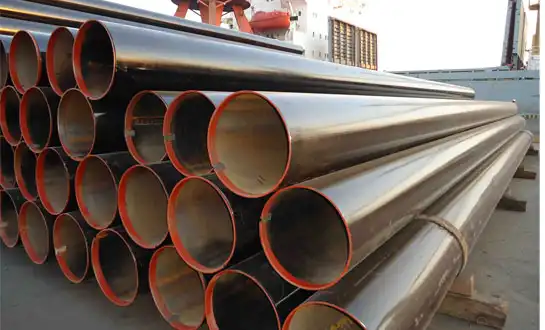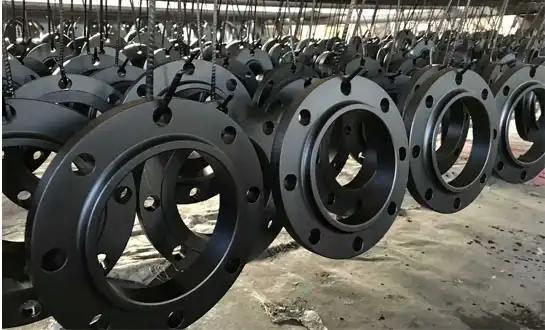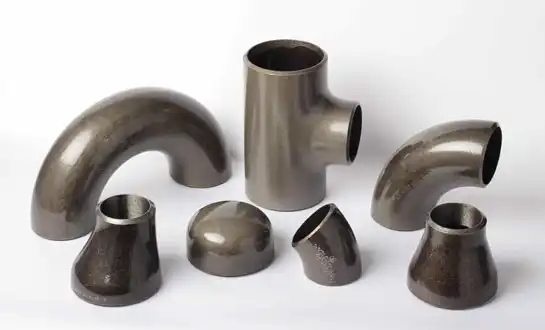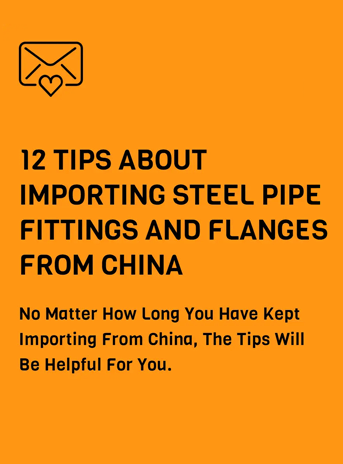Safety Considerations When Installing Threaded and Coupled Pipes
Installing threaded and coupled pipes requires meticulous attention to safety protocols that protect workers, ensure system integrity, and prevent costly failures in industrial and commercial applications. Threaded and coupled pipes represent a fundamental connection method in piping systems, offering mechanical joints that facilitate assembly, maintenance, and modification across diverse industries from oil and gas to water distribution and HVAC systems. The installation process involves multiple hazards, including physical injuries from heavy components, exposure to cutting fluids and threading compounds, risks associated with pressurized testing, and potential long-term system failures if proper techniques are not followed. Understanding and implementing comprehensive safety measures during the installation of threaded and coupled pipes not only safeguards personnel but also ensures compliance with occupational safety regulations and establishes reliable piping systems that perform safely throughout their operational lifespan.
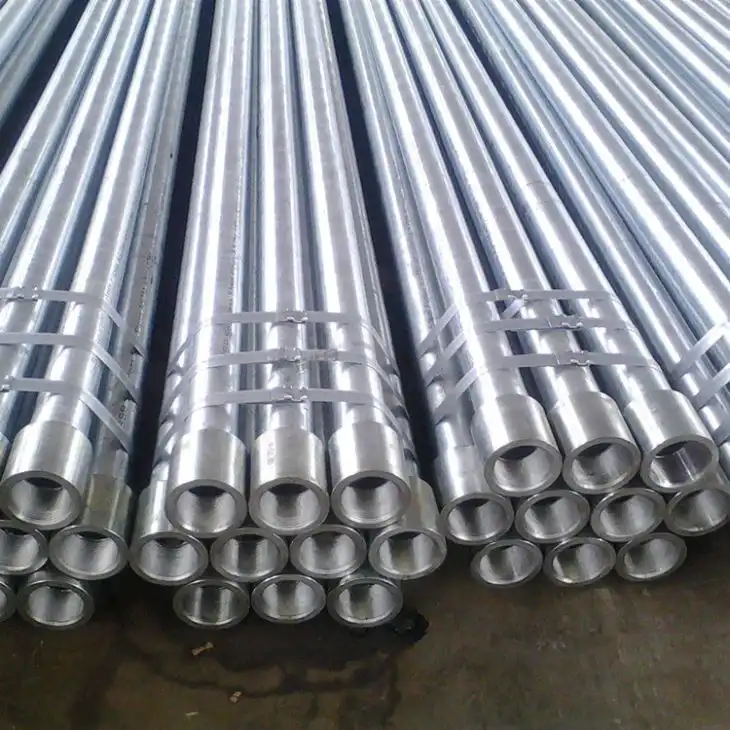
Pre-Installation Safety Planning and Risk Assessment
Hazard Identification and Control Measures
Before commencing installation of threaded and coupled pipes, comprehensive hazard identification establishes the foundation for effective safety management. The physical characteristics of threaded and coupled pipes create specific risks, including manual handling injuries from lifting heavy pipe sections, pinch points during alignment and threading operations, and laceration hazards from sharp thread edges and cutting tools. Environmental factors such as confined spaces, elevated work platforms, and proximity to energized equipment compound these inherent material risks. A thorough risk assessment examines each installation phase, identifying potential incidents and their severity to prioritize control measures. Engineering controls such as mechanical lifting devices, proper ventilation systems, and physical barriers provide the most effective risk reduction for threaded and coupled pipes installation. Administrative controls, including work permits, lockout/tagout procedures, and competency requirements, establish procedural safeguards. Personal protective equipment represents the final defense layer, with requirements typically including safety footwear, hard hats, cut-resistant gloves, and eye protection. The risk assessment documentation should specifically address the unique characteristics of threaded connections, including the need for proper thread engagement verification, torque application limits, and inspection protocols that prevent over-tightening or cross-threading.
Worker Training and Competency Verification
Proper installation of threaded and coupled pipes requires skilled workers who understand both the technical requirements and safety implications of their work. Training programs must address the specific characteristics of threaded connections, including thread types, proper application of sealants and compounds, torque specifications, and inspection criteria that ensure leak-free joints. Workers installing threaded and coupled pipes need practical instruction in the use of threading equipment, pipe wrenches, torque wrenches, and alignment tools, with emphasis on techniques that prevent common errors such as cross-threading, insufficient engagement, or excessive force application. Safety training encompasses manual handling techniques for managing heavy pipe sections, proper use of mechanical aids, recognition of pinch points and struck-by hazards, and emergency response procedures. Competency verification through practical assessments ensures workers can correctly perform threading operations, apply appropriate sealants, achieve specified torque values, and conduct visual inspections before releasing joints for service. Documentation of training records demonstrates regulatory compliance and provides evidence of organizational commitment to safety.
Site Preparation and Equipment Readiness
Effective site preparation creates safe working conditions that facilitate efficient installation of threaded and coupled pipes while minimizing accident risks. The work area requires adequate space for material staging, tool storage, and worker movement, with clear demarcation between active work zones and general access areas. Housekeeping protocols maintain organized workspaces free from tripping hazards, with designated locations for pipe sections, fittings, tools, and waste materials. Lighting levels must meet safety standards for precision work, as proper thread inspection and alignment of threaded and coupled pipes demand clear visibility. Equipment readiness checks verify that threading machines, power tools, torque wrenches, and lifting devices function correctly with appropriate safety guards. Calibration certificates for torque measurement devices ensure accurate joint assembly. Material inspection confirms that threaded and coupled pipes meet specification requirements, with particular attention to thread condition, dimensional accuracy, and material certifications. The site preparation phase also establishes communication protocols, emergency assembly points, first aid stations, and access routes for emergency services.
Installation Execution Safety Protocols
Mechanical Handling and Ergonomic Practices
Installing threaded and coupled pipes is very hard on the body and poses a big risk of injury. To protect workers' health and safety, there needs to be systematic rules in place. When workers try to lift, move, or place heavy parts without mechanical help, they could hurt their backs, muscles, or even their skulls when handling pipe sections by hand, especially larger diameter threaded and coupled pipes. Using mechanical handling tools like cranes, hoists, pipe rollers, and special lifting attachments can get rid of or greatly lessen the need for manual lifting. Musculoskeletal injuries can be avoided by using the right lifting methods for smaller threaded and coupled pipes, keeping loads close to the body, and lifting things together when they are awkward or heavy. When choosing tools, ergonomics also comes into play. For example, powered threading equipment requires less physical effort than hand dies and wrenches. Workers can do threading and tightening tasks at comfortable heights by using movable platforms or positioning equipment to make the work height more comfortable. When installing threaded and coupled pipes in small spaces, extra safety measures are needed, such as testing the air quality, using forced ventilation, and having people on call.
Thread Assembly Quality and Verification
The quality of threaded connections directly impacts both immediate installation safety and long-term system integrity, making rigorous assembly protocols essential when installing threaded and coupled pipes. Proper thread engagement requires clean, undamaged threads with appropriate sealants applied according to manufacturer specifications to prevent leakage while allowing sufficient engagement. Thread sealant selection considers the service fluid, pressure, temperature, and material compatibility. The assembly process for threaded and coupled pipes demands proper alignment to prevent cross-threading, which damages threads and creates weak joints prone to failure. Initial hand tightening ensures correct thread engagement before applying torque with calibrated wrenches. Torque specifications balance the need for adequate joint strength against the risks of thread damage or coupling distortion from excessive force. Visual inspection during assembly identifies problems such as a gap at the coupling face, damaged threads, or misalignment, requiring correction before proceeding. For critical applications involving threaded and coupled pipes in high-pressure or hazardous services, additional verification through pressure testing confirms joint integrity.
Pressure Testing and Commissioning Safety
For setups of threaded and coupled pipes, pressure testing is an important safety validation step that makes sure the system is complete while also posing serious risks that need strict safety rules. During the testing process, the system is usually filled with water or another test medium, pressurized to levels higher than normal working pressure, and held for set amounts of time to make sure there are no leaks. While threaded and coupled pipes are being tested under pressure, the potential energy stored in the compressed fluid makes it very likely that the pipes will fail catastrophically if the joints separate or parts burst. Setting up exclusion zones around test areas keeps people from coming into contact with fluids or projectiles that could be dangerous if a component fails. Test pressure increases let the system be loaded slowly, and hold times at middle pressures let leaks be found before the maximum test pressure is reached. Visual inspection during pressurization finds leaky joints, threaded connections that come loose, or system deformation, which means there are problems that need to be depressurized and fixed. Sudden pressure drops can be avoided by slowly releasing the pressure after testing is complete.
Long-Term Safety and Maintenance Considerations
Periodic Inspection and Joint Integrity Monitoring
Maintaining safe operation of threaded and coupled pipes requires systematic inspection programs that identify degradation before failures occur. Initial post-installation inspections verify that threaded and coupled pipes remain properly supported, aligned, and free from external damage. Visual inspection protocols examine coupling exteriors for corrosion products, weeping, or mechanical damage. Accessible threaded connections undergo periodic retorquing checks to confirm that thermal cycling and vibration have not loosened joints. Ultrasonic thickness testing on coupling bodies detects internal corrosion that reduces wall thickness and pressure containment capability. Inspection frequencies balance the consequence of failure against inspection costs, with critical threaded and coupled pipes in hazardous services receiving more frequent examination. Advanced monitoring technologies, including acoustic emission sensors and pressure trend analysis, provide continuous surveillance of threaded and coupled pipe systems.
Corrosion Protection and Environmental Control
Environmental factors significantly influence the service life and safety of threaded and coupled pipes, making corrosion protection and environmental control essential elements of long-term safety management. External corrosion threatens threaded and coupled pipes exposed to weather, soil contact, or corrosive atmospheres, with threads and couplings particularly vulnerable to crevice corrosion at contact surfaces. Protective coating systems, including paints, wraps, or cathodic protection, prevent external corrosion. Internal corrosion mechanisms vary with the transported fluid, requiring corrosion inhibitor programs, water treatment, or material upgrading. Insulation systems protecting threaded and coupled pipes from temperature extremes require vapor barriers preventing moisture ingress. For threaded and coupled pipes in buried services, soil resistivity testing and cathodic protection design provide systematic corrosion control.
Emergency Response and Failure Management
Despite preventive measures, failure scenarios require prepared emergency response protocols protecting personnel when threaded and coupled pipes experience unexpected problems. Emergency response plans identify potential failure modes, including joint separation, coupling fracture, or rapid leakage. Isolation procedures enable rapid system depressurization and drainage, containing released materials and creating safe conditions for repair. Automatic shutdown systems respond to abnormal conditions, including pressure loss or leak detection. Emergency equipment, including fire suppression systems, spill containment materials, and personal protective equipment, maintains readiness. Failure investigation protocols determine root causes, enabling corrective actions to prevent recurrence, with particular attention to whether threaded and coupled pipe failures resulted from installation errors, material defects, or maintenance deficiencies.
Conclusion
Safety considerations when installing threaded and coupled pipes encompass comprehensive planning, rigorous execution protocols, and systematic long-term management that protects personnel while ensuring system reliability. Pre-installation risk assessment, worker competency, and site preparation establish safe working conditions. Proper handling techniques, quality assembly procedures, and pressure testing verification validate installation integrity. At HEBEI RAYOUNG PIPELINE TECHNOLOGY CO., LTD., our expertise in manufacturing quality steel pipes and fittings, backed by ISO 9001:2015 certification, supports safe installations across diverse industries.
FAQ
1. What are the most common safety hazards during threaded and coupled pipe installation?
The primary safety hazards include manual handling injuries from lifting heavy pipe sections, pinch points during alignment operations, lacerations from sharp thread edges, and exposure to threading compounds. Cross-threading or improper torque application creates weak joints that may fail during pressure testing. Workers also face risks from working at heights and in confined spaces. Comprehensive hazard identification and appropriate controls, including mechanical handling aids, proper personal protective equipment, and worker training, minimize these installation risks for threaded and coupled pipes.
2. How can proper torque application improve safety in threaded connections?
Proper torque application ensures adequate thread engagement and sealant compression for leak-free joints while preventing thread damage from excessive force. Under-tightened threaded and coupled pipes may leak or separate under pressure, creating safety hazards. Over-tightening damages threads, distorts couplings, or creates residual stresses that promote cracking. Using calibrated torque wrenches and following manufacturer specifications achieves optimal joint strength and prevents both immediate installation problems and long-term failures in threaded and coupled pipe systems.
3. What inspection methods verify threaded connection integrity after installation?
Post-installation verification includes visual inspection for proper thread engagement, coupling alignment, and absence of gaps. Pressure testing confirms leak-free performance under conditions exceeding normal operating pressure. Torque verification ensures joints meet tightening specifications. Non-destructive examination techniques can detect surface cracks in critical threaded and coupled pipe applications. Documentation of inspection results creates accountability, and periodic re-inspection during service identifies degradation requiring maintenance intervention before failures compromise safety.
4. How does proper worker training reduce risks when installing threaded and coupled pipes?
Comprehensive training makes sure that workers know the right way to thread, apply sealant, measure pressure, and check for quality, which stops installation mistakes. Manual handling, using tools, recognizing hazards, and what to do in a situation are all covered in safety training. Verification of workers' skills makes sure they know how to install threaded and coupled pipes properly. Workers who have been taught to spot potential problems, fix them correctly, and stay safe during installation lower the risk of both short-term accidents and system failures in the long term.
HEBEI RAYOUNG PIPELINE: Leading Manufacturer and Supplier of Quality Threaded and Coupled Pipes
At HEBEI RAYOUNG PIPELINE TECHNOLOGY CO., LTD., we believe that excellent infrastructure starts with dependable materials and safe installation practices. As one of the leading pipes and fittings manufacturers, we supply high-quality threaded and coupled pipes engineered for reliable performance across demanding applications. Our comprehensive product range includes buttweld steel elbows, reducers, flanges, and complete piping solutions manufactured under strict ISO 9001:2015 quality management systems. With GOST-R and SGS certifications validating our export compliance and quality excellence, we serve as a dependable carbon steel pipe supplier to industries worldwide. We understand that the safe installation of threaded and coupled pipes requires superior materials with precise thread dimensions and consistent quality. Our technical team provides application support, helping customers select optimal threaded and coupled pipe specifications and implement safety protocols that protect workers while ensuring long-term system integrity. Contact us today at info@hb-steel.com to discuss your threaded and coupled pipes requirements.
References
1. American National Standards Institute. (2019). ASME B1.20.1: Pipe Threads, General Purpose. New York: ASME International.
2. American Petroleum Institute. (2020). API Specification 5L: Specification for Line Pipe (46th ed.). Washington: API Publishing Services.
3. Occupational Safety and Health Administration. (2018). Construction Industry Safety and Health Standards: 29 CFR Part 1926. Washington: U.S. Department of Labor.
4. Nayyar, M. L. (2019). Piping Handbook (8th ed.). New York: McGraw-Hill Education.
5. Smith, P. R. & Zappe, R. W. (2017). Valve Selection Handbook: Engineering Fundamentals for Selecting the Right Valve Design (6th ed.). Houston: Gulf Professional Publishing.
6. Parisher, R. A. & Rhea, R. A. (2021). Pipe Drafting and Design (4th ed.). Cambridge: Gulf Professional Publishing.

Need a quote? Want to see samples? Just say hello. We’re friendly. We’re fast. And we’re ready when you are.
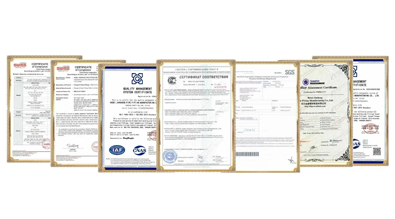
Welcome to RAYOUNG – Strong Pipes, Stronger Promise
